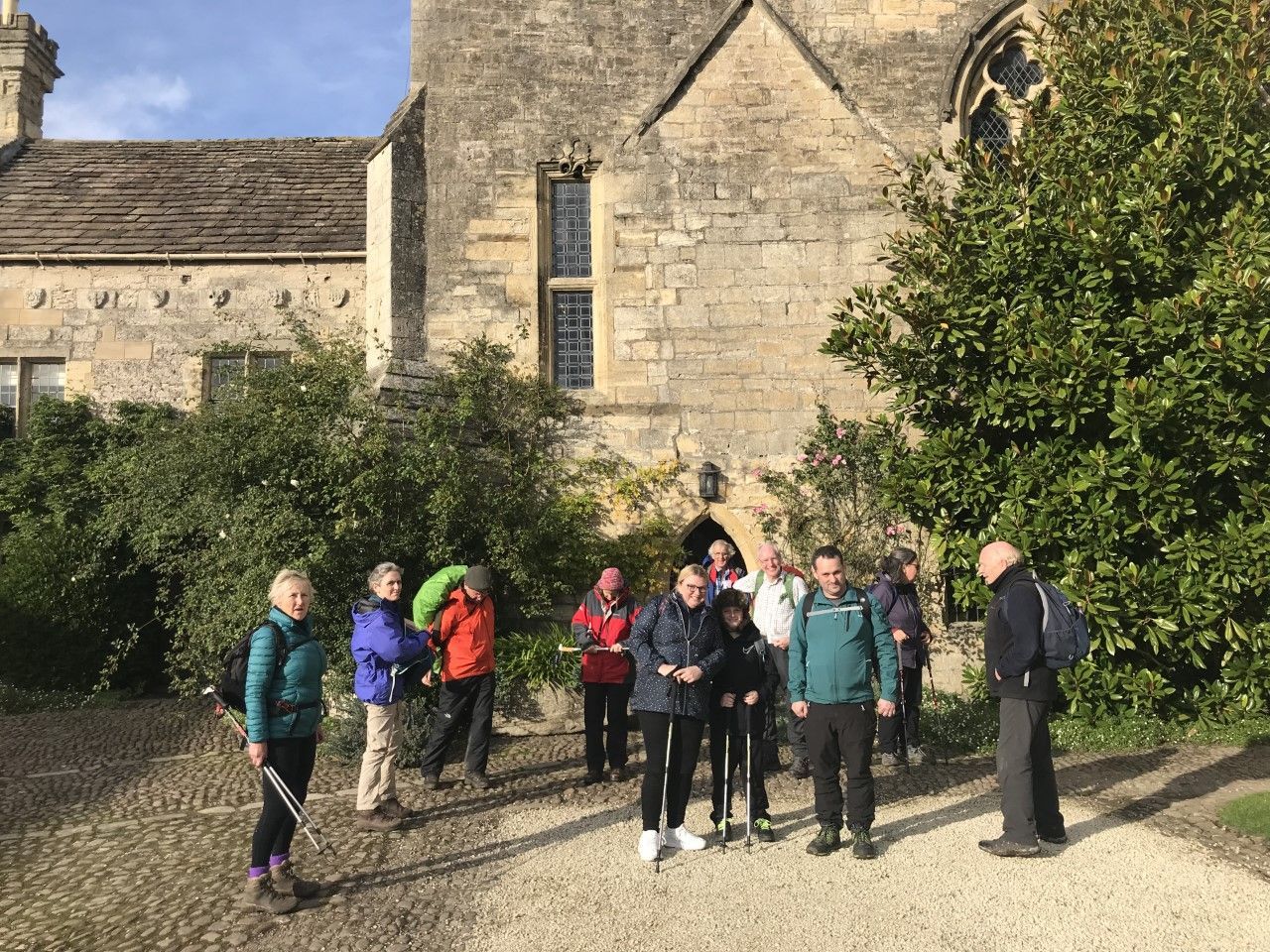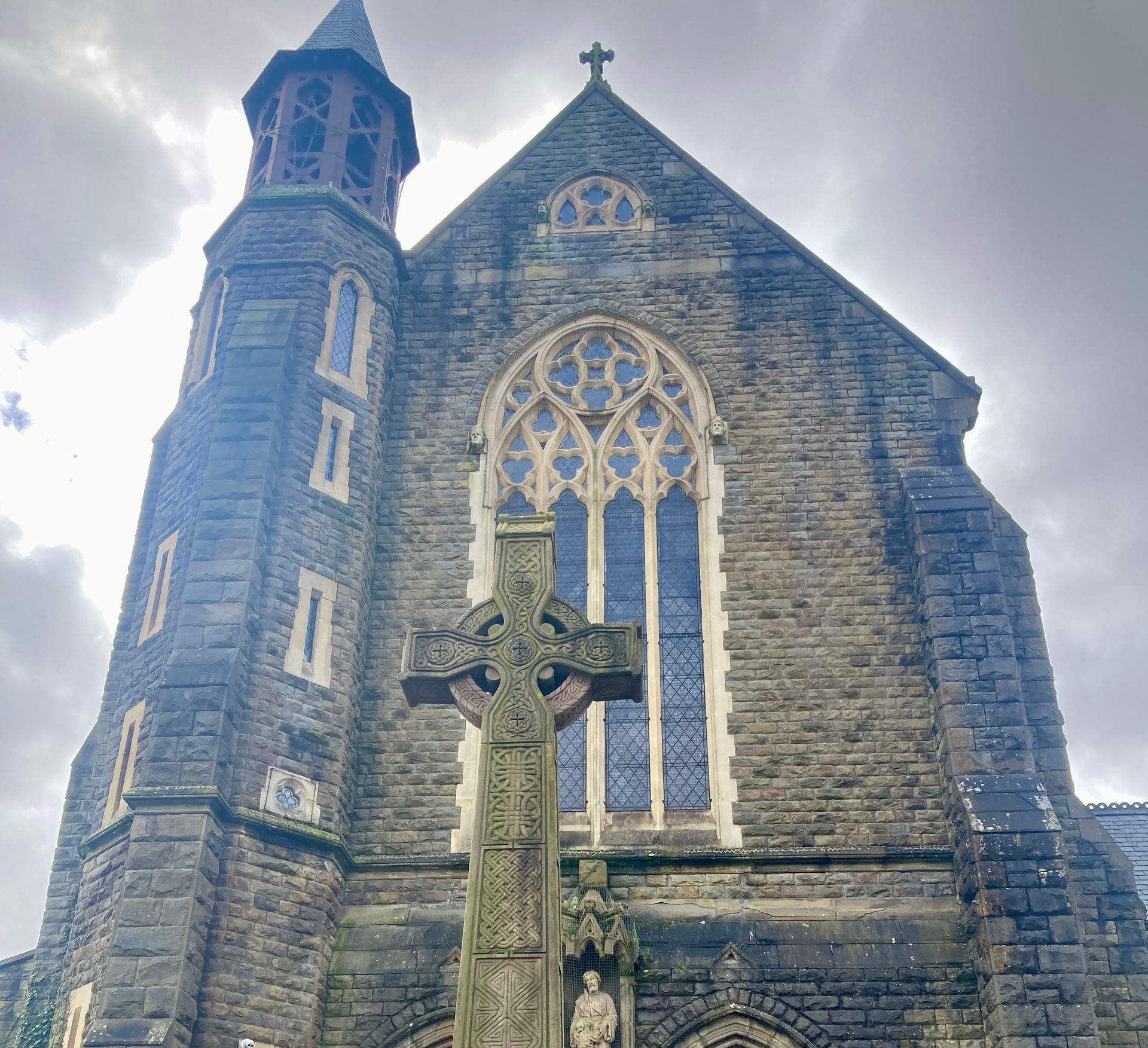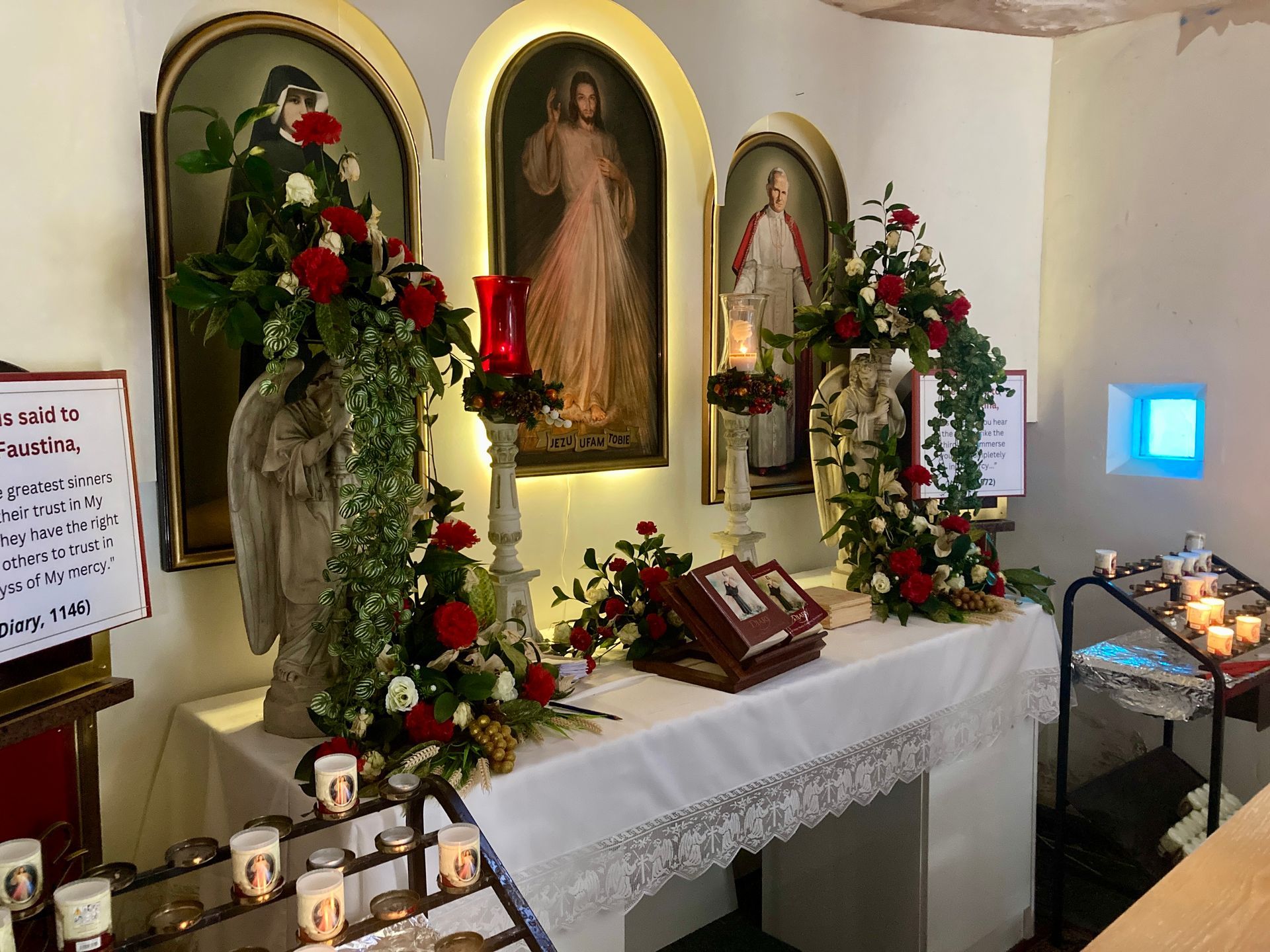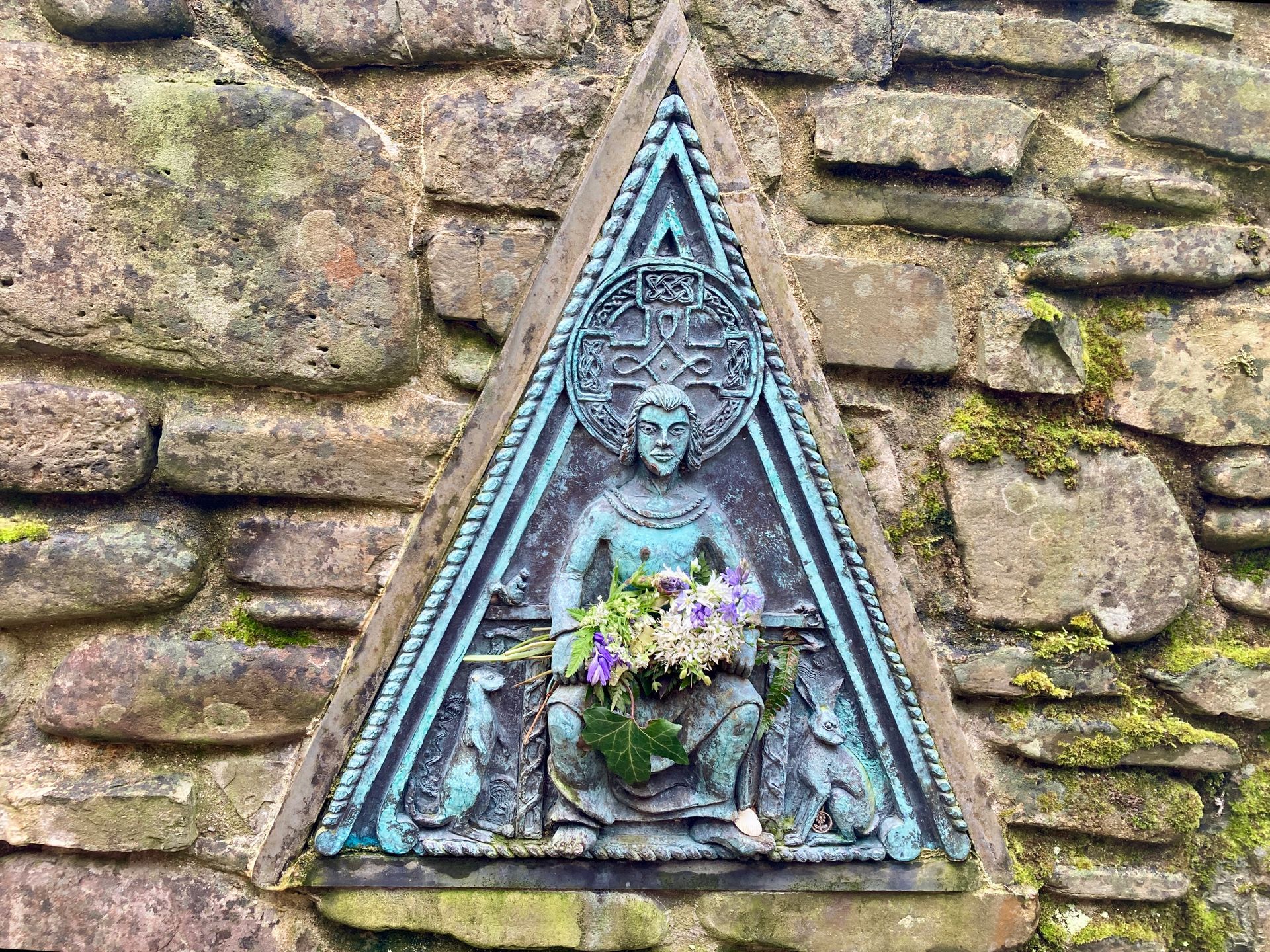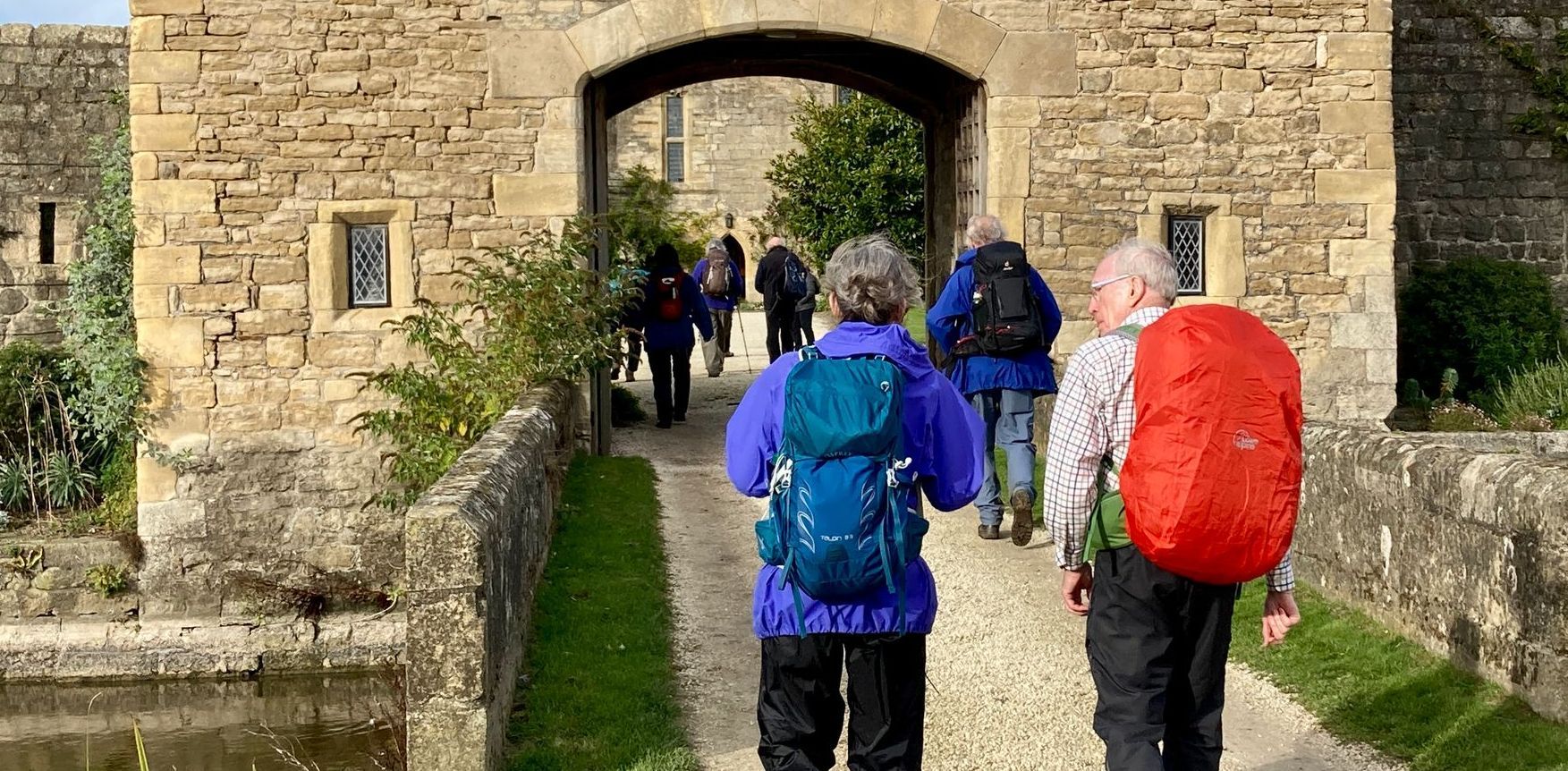The Way of St Anthony's Well
A Pilgrim Way for the Archdiocese of Cardiff-Menevia from the Cathedral of St Joseph in Swansea to St Anthony's Well, Llansteffan via the Carmarthen Bay Ferry.
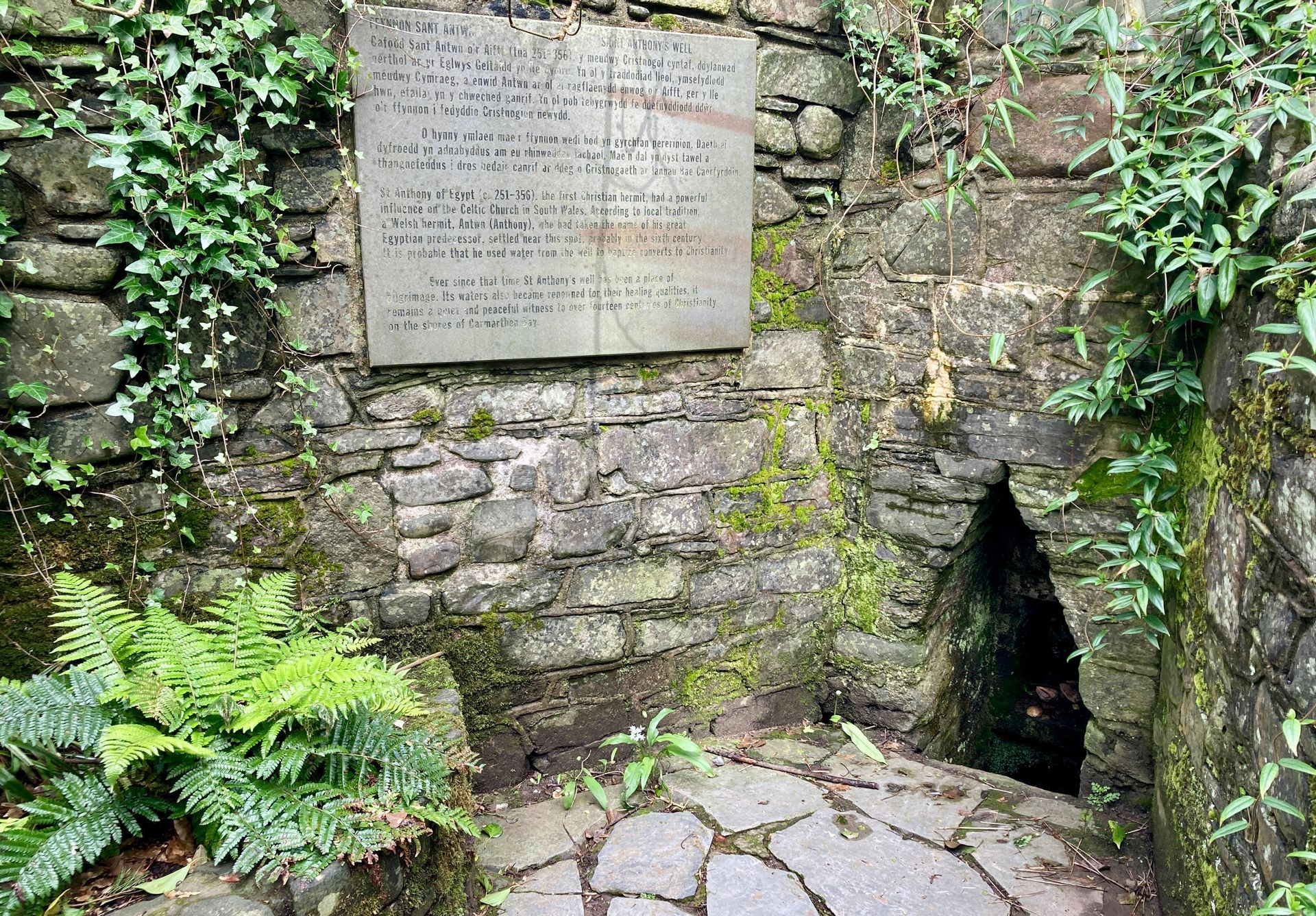
St Anthony's Well, Llansteffan
About the route
St Anthony of Egypt (c251 - 356), was a Christian hermit who a powerful influence on the Celtic Church. According to local tradition a Welsh hermit, Antwn (Anthony), who had taken the name of the Egyptian hermit, settled near Llansteffan in the C6.
The Way leaves Swansea heading north along the New Cut to reach the Shrine of Divine Mercy at the Church of the Sacred Heart in Morriston. The Way heads west to join and follows a disused railway line to reach the Wales Coast Path. The path reaches the Church of Our Lady Queen of Peace at Llanelli and then the Church of Our Lady Star of the Sea at Burry Port. The route crosses Pembry Forest to reach the Church of Our Lady & St Cadoc at Kidwelly, and then continues along the coast to reach Ferryside where the River Towey is crossed by ferry. St Anthony's Well is a short walk south of the village of Llansteffan.
You can find out more about the Way and download the GPX file by clicking on the LEARN MORE tab in the
interactive map below
Guidance
Using the tabs in this section you can find the information you need for your pilgrimage.
The Outer Way provides practical advice about the route.
The Inner Way describes the spiritual highlights.
Using the button below you can download details of the inner and outer ways, the walking guidance and maps.
Stages: route, food & drink, accommodation and public transport
1: St Joseph’s Cathedral, Swansea to the Church of the Sacred Heart, Morriston: 4.2 miles
The route is urban, passing some interesting industrial heritage, and then along a pleasant green corridor beside the River Tawe. There are national rail and coach station in central Swansea and the cathedral can be reached by bus or on foot. There is plenty of accommodation, pubs, cafés, restaurants and shops in Swansea. There is a fish & chips shop near the start and then shops, pubs and cafés in Morriston. There are buses back to Swansea from Morriston.
2: Church of the Sacred Heart, Morriston to Gowerton: 6.3 miles
The route is through the suburbs of Swansea until Llewitha Bridge, where it follows footpaths to reach Gowerton. There are pubs south of the route at Tirdeunaw and shops, pubs and cafés in Gowerton. There is a railway station in Gowerton and the bus network can be accessed at numerous points along the way.
3: Gowerton to the Church of Our Lady, Queen of Peace, Llanelli: 9.6 miles
The route soon joins the Wales Coast Path (WCP), crosses the River Loughor by bridge and continues along the WCP to Llanelli. There is a pub on the route shortly after the bridge. There is some accommodation and several pubs, cafés, restaurants and shops in Llanelli. There is a railway station in Llanelli and buses.
4: The Church of Our Lady, Queen of Peace, Llanelli to the Church of Our Lady, Star of the Sea, Burry Port: 4.8 miles
The route soon rejoins the WCP and follows it until diverting into Burry Port. There are several pubs, cafés, restaurants and shops in Burry Port. There may be some B&B accommodation nearby. There is a railway station and bus stops.
5: The Church of Our Lady, Star of the Sea, Burry Port to the Church of Our Lady & St Cadoc, Kidwelly: 9.3 miles
The route re-joins the WCP to reach Pembrey Forest and then follows forest paths and quiet lanes to the outskirts of Kidwelly. There is a café enroute, several pubs, cafés, restaurants and shops in Kidwelly and B&B accommodation nearby. There is a railway station and bus stops.
6: The Church of Our Lady & St Cadoc, Kidwelly to St Anthony’s Well, Llansteffan: 5.2 miles including 0.8 miles by ferry
NB the ferry from Ferryside to Llansteffan only operates during the summer and sailings are dependent on the tide. For more information see: https://www.carmarthenbayferries.co.uk/
The route follows the WCP beside the estuary and then inland to the village of Llansaint. The route then crosses countryside to reach Ferryside and the ferry to Llansteffan. The route follows the coast west to St Anthony’s Well. It is a short walk back to the Llansteffan village. There is a pub in Llansaint, and pubs, cafes and shops in Ferryside and Llansteffan. There is a bus stop in Llansaint, a railway station in Ferryside and buses, and a limited bus service from Llansteffan to Carmarthen: please check timetables first.
Public transport links
Trains:
https://www.nationalrail.co.uk/
Coaches:
https://www.nationalexpress.com/en
Buses:
https://www.pembrokeshire.gov.uk/bus-routes-and-timetables
Ferry:
Pilgrim places and people
NB Many churches are closed during daylight hours. If you would like to visit the churches and shrines it is best to check the parish website first. You can also email or phone the parish office to see is someone would be willing to open the church. Please be aware that many priests cover more than one church and so may live many miles away.
The Cathedral of St Joseph, Swansea
The district of Greenhill was originally part of the mission territory of St David’s Church, in the centre of Swansea. A simple church, which was opened in 1866 on the site of the present parish/cathedral hall. In 1873 the Swansea mission was given over to the Benedictine Order and St Joseph’s became a separate mission. Canon Richards raised money for a handsome new church, designed by Peter Paul Pugin in the Geometrical Gothic style. Building began in 1886 and the church was opened in 1888. On 7 December 1919 the church was consecrated, and a Celtic memorial cross to the memory of parishioners who died in WW1 was unveiled. The Benedictines served the parish until 1932, when it passed to the Diocese of Cardiff. In 1978 diocesan boundaries were revised and St Joseph’s became the cathedral of the Diocese of Menevia.
The Church of the Sacred Heart, Morriston
In 1899 the Benedictines purchased a former Baptist chapel in Morriston. Morriston became an independent parish in 1922, administered by the Benedictines until 1932, when the parish was handed to the Diocese of Cardiff. The old, corrugated iron church was destroyed by fire on Holy Saturday 1952. A building fund was set up and a new church was opened on 14 April 1955. During the late 1950s and early 60s new residential estates in the parish meant more space was needed. The building was re-orientated, and the enlarged church was opened in 1964. In 2017 the church was inaugurated as a diocesan shrine of Divine Mercy, and new stained-glass windows were installed in the nave.
In 1931, in Płock, Poland, Faustina Kowalska, a religious sister and mystic, had a vision of Jesus who tasked her with spreading devotion to his Divine Mercy. The two main themes of the devotion are to trust in Christ's endless goodness, and to show mercy to others, acting as a conduit for God's love towards them. The feast of Divine Mercy was instituted by St Pope John Paul II in 2000 and is celebrated on the Sunday after Easter.
The Church of Our Lady, Queen of Peace, Llanelli
The Llanelli mission dates originally from the 1880s. A substantial church was built on the present site in 1938, but this had to be demolished in 1985 because of structural problems. Work on a new church began in December 1993 and the church was opened in July 1995. The interior has a striking timber roof. In 2004 the Carmelite Friars took over care of the parish but it is now served by the Diocese.
The Church of Our Lady, Star of the Sea, Burry Port
Burry Port was a small fishing settlement until the 1830s, when substantial docks were built to export the products of the local coalfield and industries. All these industries have now closed, though the docks remain. In 1917 the Rev John Jarvis arrived as chaplain to Lady Catherine Ashburnham at Pembrey House and ministered to Catholics working at the ordnance factory. When Lady Catherine left, Fr Jarvis remained as parish priest. In 1932 Lady Howard Stepney purchased a hall in Pencoed Road, Burry Port for use as a church. By the late 1950s the building was in poor condition and funds were raised for the building of a new church. It was opened in 1964, designed with a hexagonal plan, with the altar placed so that the priest could say Mass facing the congregation as well as facing eastwards as traditionally. The interior was reordered in 1988.
The Church of Our Lady & St Cadoc, Kidwelly
When Fr Owen Basil Rowlands began his ministry in at Burry Port in 1927, he celebrated Mass once a fortnight at Tumble. At first Mass was celebrated in the hall at the Old Tumble Hotel and the altar was in the club boxing ring. Later a small church was built at Tumble. During WW2 the church was moved to the present site in Kidwelly where it was used until in 1975, when it was replaced by the present building.
St Anthony’s Well, Llansteffan
The stone plaque alongside the arched opening reads:
‘St Anthony of Egypt (c 251 - 356), the first Christian hermit, had a powerful influence on the Celtic Church in South Wales. According to local tradition a Welsh hermit, Antwn (Anthony), who had taken the name of his great Egyptian predecessor, settled near this spot, probably in the C6. It is probable that he used water from the well to baptize converts to Christianity. Ever since that time St Anthony's well has been a place of pilgrimage. Its waters also became renowned for their healing qualities. It remains a quiet and peaceful witness to over fourteen centuries of Christianity on the shores of Carmarthen Bay.’
It is possible that a hermitage once existed where St Anthony's Cottage stands. Holy wells were a source of water for baptism, but they evolved a secondary function as pilgrim waypoints. In 1123, Pope Callixtus II recognised the Shrine of St David as a place of pilgrimage. Pilgrims used the holy wells across South Wales as a route to reach St David's, and Sant Antwn's may have been one of these.
ABOUT THE ARCHDIOCESE OF CARDIFF-MENEVIA
This Way is within the boundaries of the former Diocese of Menevia. With the re-establishment of the Catholic hierarchy of England & Wales in 1850 the diocese of Newport and Menevia was set up. Boundaries were changed in 1895, when the diocese of Newport was redefined as comprising the counties of Glamorgan, Monmouth and Hereford. In 1916 the Cardiff Province was established, comprising the Metropolitan Archdiocese of Cardiff with the diocese of Menevia as a suffragan see.
After 1895, the Diocese of Menevia included most of Wales, and this presented a variety of difficulties which led Archbishop Ward of Cardiff and Bishop James Hannigan of Menevia to petition Rome for a third diocese. This happened in 1987 when the Diocese of Wrexham was established covering north Wales. This left Menevia as a small diocese. In September 2024 Pope Francis approved the creation of the new unified Archdiocese of Cardiff-Menevia, covering the areas served by the two former dioceses.
Copyright Hearts in Search of God - Pilgrim Way Project (England and Wales)
Web Design by Catholic Marketing Agency: Every Day Christian Marketing
